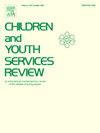Reliability, validity, and response patterns of the Juvenile Victimization Questionnaire in a sample of adolescents in residential care
IF 2.4
2区 社会学
Q1 FAMILY STUDIES
引用次数: 0
Abstract
Background
International research has been relying on data from the original study of the JVQ to support the validity of this instrument in child welfare samples. Despite the JVQ’s extensive history of research, it is important to establish its appropriateness for use in diverse populations, namely youth in residential care.
Objectives
This study sought to examine the internal consistency reliability and construct validity of the self-report lifetime version of the JVQ in a sample of 116 adolescents living in Portuguese Residential Care Homes, boys and girls aged between 12 and 17 years old. With the authors’ permission, the instrument was adapted for the purpose of collecting detailed information on the chronicity, timing, and perpetration of victimization experiences. Patterns of endorsement to both screener items and follow-up questions were also analyzed.
Results
The Cronbach’s alpha value for the full JVQ was very good (0.92), whereas for most aggregates it ranged from acceptable (0.70) to good (0.82). Positive and significant correlations with psychological and trauma symptoms were found for all aggregates and for most of the individual screener items. Patterns of endorsement to victimization screeners differed according to sex. The chronicity rate was significantly higher in most screeners. Endorsement rates for most victimization screeners were lower for events occurring after placement in residential care. Peer violence was highly reported by adolescents in this sample.
Conclusions
Findings suggest that the JVQ is a reliable and valid screening tool for victimization and polyvictimization among adolescents in residential care.
青少年受害问卷在寄宿照顾青少年样本中的信度、效度及反应模式
国际研究一直依赖于JVQ原始研究的数据来支持该工具在儿童福利样本中的有效性。尽管JVQ有着广泛的研究历史,但重要的是要确定其在不同人群中使用的适用性,即住宿护理中的青少年。目的本研究以116名年龄在12 - 17岁的葡萄牙寄宿护理院青少年为样本,检验JVQ自我报告终身版的内部一致性、信度和结构效度。在作者的许可下,对该工具进行了修改,以收集有关受害经历的长期性、时间和实施的详细信息。对筛选项目和后续问题的背书模式也进行了分析。结果:整个JVQ的Cronbach 's alpha值非常好(0.92),而对于大多数聚合体,其范围从可接受(0.70)到良好(0.82)。在所有集合和大多数个别筛选项目中,都发现了与心理和创伤症状的显著正相关。对受害筛选者的支持模式因性别而异。大多数筛查者的慢性率明显较高。大多数受害筛选者的认可率在安置在寄宿护理后发生的事件较低。在这个样本中,青少年报告了大量的同伴暴力行为。结论JVQ是一种可靠、有效的青少年受害和多重受害的筛查工具。
本文章由计算机程序翻译,如有差异,请以英文原文为准。
求助全文
约1分钟内获得全文
求助全文
来源期刊

Children and Youth Services Review
Multiple-
CiteScore
6.30
自引率
6.10%
发文量
303
期刊介绍:
Children and Youth Services Review is an interdisciplinary forum for critical scholarship regarding service programs for children and youth. The journal will publish full-length articles, current research and policy notes, and book reviews.
 求助内容:
求助内容: 应助结果提醒方式:
应助结果提醒方式:


